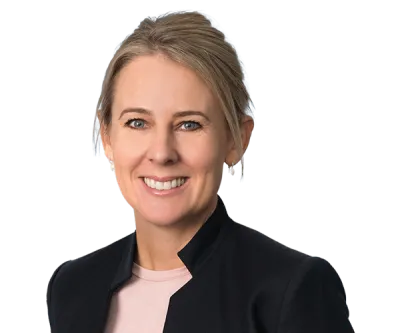Privy Council Hands Down Landmark Ruling on Priority Between Trustees' Competing Rights of Indemnity
On 13 October 2022, the seven-member Board of the Privy Council handed down its landmark judgment in Equity Trust (Jersey) Ltd v Halabi and ITG Ltd and others v Fort Trustees Ltd and another [2022] UKPC 36 from the Jersey and Guernsey Courts of Appeal.
Introduction
Both appeals concerned the nature and scope of a trustee's right of indemnity and exculpation in circumstances where: (i) there were multiple trustees with claims against the trust fund under their respective rights of indemnity and exculpation; and (ii) the assets held on trust were insufficient to meet all of the trustees' claims in full, rendering the trusts insolvent in practical terms.
While the trusts in question were both governed by Jersey law, the Board determined that the applicable Jersey trusts law was, in principle, the same as English law in all material respects. For that reason, the position under English law informed their analysis of the issues to be determined in the appeals. While the decision will have far-reaching implications for the Channel Islands – whose statutory provisions are very similar, the decision will also have repercussions for other offshore jurisdictions which apply principles of English common law, subject to any contrary local provisions, (i.e. Cayman Islands, Bermuda and the British Virgin Islands).
Background to the appeals
In the Jersey appeal (Equity Trust (Jersey) Limited v Halabi), Equity Trust (Jersey) Limited (ETJL) had been removed as trustee. Subsequently, a claim was brought against ETJL qua trustee by the joint liquidators of a company within the trust structure. ETJL was sued for £53 million arising from an alleged breach of their fiduciary duties. The proceedings settled and ETJL sought to recover the total sum of £18.9 million under its indemnity, comprising £16.5 million paid by way of settlement and £2.4 million in costs. This led to contested proceedings before the Royal Court of Jersey, which held that successive trustees (and creditors of those trustees claiming through the trustees by way of subrogation) ranked pari passu in their claims against the trust assets. The Court also held that ETJL was not entitled to the costs of proving its claim.
On appeal, the Jersey Court of Appeal reversed this decision, holding that ETJL’s right of indemnity ranked ahead of those of successor trustees on a 'first in time' basis. The Court of Appeal also held that ETJL’s costs of proving its claim were recoverable under its indemnity.
The Jersey appeal was conjoined with a Guernsey appeal arising out of the long-running cases involving the Tchenguiz Discretionary Trust (the TDT). ITG Ltd (ITG) had been the original trustee of the TDT, with a related corporate entity, Bayeux Trustees Ltd (Bayeux), acting as co-trustee. After ITG and Bayeux were removed from office, Rawlinson & Hunter Trustees SA (now Geneva Trust Company SA) were appointed and held office for approximately seven years between 2010 and 2017. Subsequently, they were removed, and Fort Trustees Ltd and Balchan Management Limited were appointed.
The original dispute stemmed from lending provided to certain British Virgin Islands (BVI) companies within the TDT trust structure by Kaupthing Bank HF in 2008, when ITG and Bayeux held office. The loans were for substantial sums – totalling c.£100 million, €78,825 million and £80,541 million respectively.
Having initially disputed the validity of the loans, in 2014 a judgment was entered in favour of the BVI companies against ITG and Bayeux. Following multiple appeals, the case eventually reached the Privy Council. In addition to the main proceedings, there were related trust administration proceedings and separate contested breach of trust claims. Substantial costs were incurred in these various proceedings.
Following the Privy Council judgment, the BVI companies began enforcement proceedings, and a process was laid down in October 2018 intended to identify and resolve the various claims against the assets of the trust, including the question of which claims, if any, had priority. The TDT did not have sufficient assets to satisfy all of the claims against it, so the Royal Court proceeded to hear arguments over the validity and amount of the claims asserted and as to which had priority.
Agreeing with the approach that had been adopted in the ETJL case, the Guernsey Royal Court held that the claims of a former trustee (and its trust creditors who claimed through that trustee) had priority over the claims of any successor trustees. Further, the claims of each trustee had priority over the creditors who claimed through that trustee, the creditors being subrogated to that trustee's lien. This approach was upheld by the Guernsey Court of Appeal.
In both cases, therefore, the key area for the Board's decision was the issue of which trustee claim had priority, if any, and what the position was vis-à-vis creditors of the various trustees.
Summary of the Privy Council's decision
In summary, the Board concluded as follows:
- A trustee's right of indemnity in respect of expenses incurred reasonably in its capacity as trustee confers a proprietary interest in the trust assets by operation of equity. This proprietary interest takes priority over the interests of the beneficiaries.
- The proprietary interest of a retiring trustee survives the transfer of assets to a successor trustee.
- A former trustee's proprietary interest in the trust assets does not take priority over the equivalent interests of successor trustees. Accordingly, in the event that the trust fund has insufficient assets to meet the claims of all of the trustees (i.e. in the case of an "insolvent" trust), the trustees' claims rank pari passu.
- A trustee's indemnity extends to the costs of proving its claim.
Issues 1, 2 and 4 were determined unanimously, whereas the Board was split three to four on issue 3.
In more detail:
Article I. Point 1: A trustee's right of indemnity confers a proprietary interest
This point is considered in the joint judgment of Lord Richards and Sir Nicholas Patten with whom the Board unanimously agreed. Following a consideration of the English and Australian authorities, it was held that a trustee's equitable right of indemnity conferred a proprietary interest in the trust property. The proprietary interest arose because of the trustee's right of equitable enforcement of its indemnity. The Board commented that the indemnity was not comparable to a debt or charge because there is no person against whom the trustee can bring a claim for payment. The position was summarised thus: "the trustee's right, enforceable in equity, is no more and no less than the right to have the trust property applied in indemnifying the trustee against liability properly incurred". The contention that a trustee's indemnity was merely a possessory lien or a "mere equity", dependent on a specified event for crystallisation, was therefore rejected.
Article II. Point 2: The proprietary interest survives the transfer to a new trustee
It was argued that, even if a trustee's indemnity conferred a proprietary interest, this would only endure for as long as the trustee possessed or held legal title to the trust property.
The Board noted that this point had not previously been considered in the English authorities. However, once it was accepted that a trustee's indemnity amounted to a proprietary interest it would be highly irregular if such an interest was extinguished on the transfer of legal ownership: it is usually a defining feature of such an interest that it survives transfer. Based on this analysis, along with an exposition of the leading textbooks and Australian authorities, the Board held that the trustee's proprietary interest survives the transfer to a replacement trustee.
Article III. Point 3: There is no priority as between the competing proprietary interests of successive trustees, which rank pari passu
This was plainly the area that gave rise to the greatest challenge for the Board, and it was acknowledged by all the members of the Board that this was a novel point of law.
The dissenting view
The dissenting view is set out in the judgment of Lord Richards and Sir Nicholas Patten, with which Lord Stephens agreed.
This judgment adopts the general principle governing the priority of equitable interests. Under this principle, priority is accorded to those interests which are 'first in time' to arise. This judgment concluded that there was no basis for departing from that general position in this case.
It was also held that proprietary interests should be deemed to arise from the date of the appointment of each successive trustee. Thus, the proprietary interests of former trustees would rank in priority to those of subsequently appointed trustees. This relied on the following analysis:
- The purpose of the equitable interest was to assist the trustee, rather than the trustee's creditors. The trustee's creditors would therefore claim through that trustee via their right to be subrogated to the trustee's claim.
- In preferring to accord priority based on each successive trusteeship, this judgment rejected the argument that a trust should be perceived as a “continuum”— such arguments prioritised “common economic characteristics of a trust over the legal nature of a trust" (paragraph 185).
- The trustees stand in a very different position to the creditors of a company or an individual, amongst whom pari passu is the traditional and appropriate ranking.
- A pari passu approach between successive trustees could lead to injustice (e.g. the exposure arising for former trustees in the event of a spendthrift successor trustee).
- The risks to former trustees could result in overreliance on security at the point of retirement, hampering the proper administration of trusts.
The majority decision
The above view did not, ultimately, prevail, with Lord Briggs' judgment being adopted by Lord Reed and Lady Rose. In a further twist, Lady Arden concurred with the conclusion reached in Lord Briggs' judgment, but not with the reasoning.
Lord Briggs agreed with the judgment of Lord Richards and Sir Nicholas Patten to the extent of concurring that 'first in time' should be the general rule applicable in determining the priority of equitable interests. However, Lord Briggs' judgment concluded that this general rule should be disapplied in this case in favour of an alternative rule, in the interests of “justice, equity, fairness and common sense", (paragraph 239).
The reasoning underpinning this conclusion included the following points:
- A secondary purpose of a trustee's proprietary interest was to protect creditors claiming via subrogation.
- Equity takes a “pragmatic and flexible approach” (paragraph 251) where a legal fiction would have unjust consequences.
- The 'first in time' approach would result in an unfair outcome in the event of multiple joint trustees being appointed successively.
- It is correct to think of a trust as a “continuum” as a trust has “an enduring character which is independent of separate legal personality” - and the 'first in time' rule jars in this context (paragraph 257).
- The position of trustees between each other can be compared to the position of other fiduciaries (e.g. company directors and liquidators) where the appropriate approach is pari passu.
- The insufficiency of the trust fund to meet all of the trustees' claims was a common misfortune and “there is an inherent justice in equal division or equal sharing in a common misfortune, which is captured in the equitable maxim equality is equity” (paragraph 277).
Lady Arden’s analysis
Lady Arden doubted that the general rule of 'first in time' would apply; her view is set out at paragraph 313:
“I do not analyse this as a case of taking away of a right of priority. My view is that there was never any priority in the first place save as respects beneficiaries. Thus, the first in time maxim has no application in circumstances such as arise on the present appeals where the context does not involve beneficiaries. Accordingly, there is no maxim to be disapplied and no right of priority to be taken away".
In her view:
- It was appropriate to adopt a principles-based approach which looked to the purpose for which the trustee’s proprietary right was conferred on the trustee, namely to accord trustees and their creditors priority over the interests of the beneficiaries. Priority was inconsistent with this purpose.
- Lord Briggs' “common misfortune analysis” was inconsistent with the principle that equity follows the law, because - if the 'first in time' principle applied, applying pari passu would have the effect of divesting pre-existing proprietary interests.
Article IV. Point 4: A trustee's indemnity extends to proving its claim
The Board unanimously concluded that a trustee’s right of indemnity extended to the costs of proving its claim. As per paragraph 235 of the Lord Richards and Sir Patten Judgment:
"It is well established that a trustee's right of indemnity extends to costs incurred in proceedings brought by or against a trustee in its capacity as trustee, provided only that there is no misconduct on the part of the trustee…. These is no basis for suggesting that this principle does not apply to the costs of proceedings by a trustee to establish a right to indemnity in respect of particular liabilities. Nor is there any basis, given our conclusion on the survival of a former trustee's right of indemnity, for suggesting that it does not extend to such costs incurred after the replacement of a trustee."
Jersey law
The Board unanimously determined that there was nothing in Jersey statutory or customary law which would distinguish the position under Jersey law from the English position set out above.
Comment
Following the Board's decision, successor trustees (and their creditors) now have comfort that they will receive a proportionate share of an "insolvent" trust fund on a pari passu basis. Given that it will not always be possible for successor trustees to discover potential claims against former trustees prior to taking office, this will no doubt be a welcome development in some quarters.
This boon to successor trustees will, however, come at the expense of former trustees, who may be left exposed to the risk of the trust fund being depleted by a profligate successor trustee. So, what is a retiring trustee to do? Lady Arden's obiter comments (paragraphs 280-282) suggest that taking security over the trust fund may not be the answer to this issue and she considered that doing so may well form the basis of future proceedings between successive trustees. Lady Arden suggested that contractual undertakings could be obtained from successor trustees to plug any gap. She also suggested that it was open to a former trustee to monitor the conduct of a successor trustee and, if necessary, take action to restrain them.
In practice, it is extremely difficult to see how this could work once the former trustee has retired – on a practical level, how is a former trustee to 'monitor' a successor trustee effectively, for example, in the conduct of legal proceedings or in relation to investments? Upon termination the former trustee's right to information will generally have come to an end. Further, if the trustee has been removed due to a breakdown in relationships with the beneficiaries, it is highly unlikely that the beneficiaries would be willing to grant the former trustee such access.
A further unresolved issue was the process for determining pari passu distributions, which is likely to form the basis of future decisions. Lord Briggs expressed an obiter view that in contentious circumstances judicial oversight of the procedure may be required (paragraph 268).
Also instructive are Lord Richards and Sir Nicolas Patten's obiter comments that a trustee's proprietary interest in the trust fund is likely to be extinguished on distribution of the trust fund to beneficiaries (paragraph 115). In view of these comments, it remains essential for trustees to obtain contractual indemnities from beneficiaries upon distribution.
The decision provides welcome clarity regarding the competing interests of incumbent and former trustees of insolvent trusts, but it will also cause concern for retiring or outgoing trustees where there are (or may be) considerable liabilities due.





